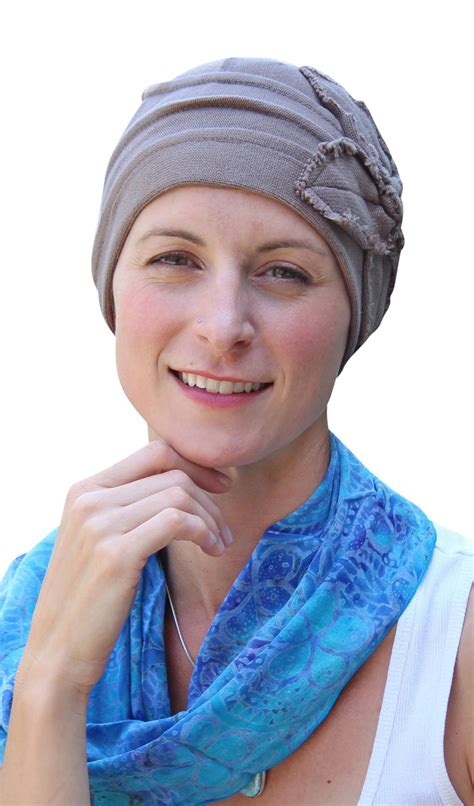Understanding the Needs
Chemotherapy can lead to hair loss, a common and distressing side effect that can affect patients’ self-esteem and quality of life. Head coverings provide comfort, privacy, and a sense of normalcy during this challenging time.

According to the National Cancer Institute, approximately 65% of chemotherapy patients experience hair loss. The American Cancer Society estimates that over 500,000 new cancer cases will be diagnosed in 2023, suggesting a significant population of individuals who may benefit from head coverings.
Types of Head Coverings
1. Wigs (Synthetic and Human Hair)
- Resembling natural hair, wigs provide full coverage and versatility in styling.
- Synthetic wigs are cost-effective and durable, while human hair wigs offer a more natural feel and appearance.
2. Scarves
- Easily adjustable and breathable, scarves come in various fabrics and patterns to match personal preferences.
- They can be tied, draped, or turbaned for different looks.
3. Beanies
- Soft, comfortable, and lightweight, beanies provide warmth and coverage.
- Cotton or bamboo beanies are suitable for sensitive skin.
4. Head Wraps
- Similar to scarves, head wraps offer a secure fit and versatile styling options.
- Pre-tied and adjustable head wraps provide convenience.
5. Hats
- Offering sun protection and warmth, hats are a practical choice for outdoor activities.
- Wide-brimmed hats provide additional coverage.
Comfort and Practicality
1. Material: Choose fabrics that are soft, breathable, and gentle on sensitive skin.
2. Size and Fit: Ensure head coverings fit snugly without being too tight. Adjustable closures allow for customization.
3. Style: Explore different styles and colors that complement personal preferences and outfits.
4. Versatility: Opt for head coverings that can be dressed up or down for various occasions.
5. Durability: Consider the longevity and ease of care when selecting a head covering.
Common Mistakes to Avoid
- Selecting a head covering that is too small or too tight, causing discomfort.
- Using scratchy or irritating fabrics that aggravate sensitive skin.
- Neglecting to wash or care for head coverings, leading to odor and bacteria buildup.
- Overheating while wearing a head covering in warm environments.
Frequently Asked Questions
1. When should I start wearing a head covering?
As soon as hair loss begins to occur, typically 2-3 weeks after starting chemotherapy.
2. How can I choose the right head covering?
Consider individual preferences, comfort, style, and practicality. Consult with healthcare providers or support groups for recommendations.
3. How often should I wash my head coverings?
Follow manufacturer’s instructions, but generally wash them regularly to maintain hygiene.
4. Are there any resources for finding affordable head coverings?
Many non-profit organizations and hospitals offer free or low-cost head coverings for cancer patients.
5. Can I wear a head covering during exercise?
Yes, but opt for moisture-wicking and breathable fabrics.
6. How can I style my head coverings?
Experiment with different ways to tie, drape, or accessorize head coverings. Consult online tutorials or seek advice from support groups.
7. What if I have sensitive skin?
Choose head coverings made from soft, natural fabrics such as cotton, bamboo, or silk. Avoid synthetic materials or harsh dyes.
8. Can I wear a head covering after chemotherapy?
Yes, some patients prefer to continue wearing head coverings for comfort or privacy after hair regrowth.
Emerging Trends and Innovations
- Bamboo Head Coverings: Bamboo fabric is highly absorbent, breathable, and antimicrobial, making it an ideal choice for sensitive skin.
- ** turbans:** Pre-tied turbans offer convenience and provide a sophisticated look.
- Scalp Coolers: Devices that reduce scalp temperature during chemotherapy, potentially minimizing hair loss.
- 3D-Printed Head Coverings: Personalized head coverings customized to individual measurements and preferences.
- Smart Head Coverings: Head coverings that incorporate sensors to monitor temperature, moisture levels, and scalp health.
Conclusion
Head coverings play a vital role in supporting the comfort, confidence, and well-being of patients undergoing chemotherapy. By understanding the different types, considering individual needs, and avoiding common mistakes, patients can find the optimal head covering that meets their unique requirements. Innovations in head coverings continue to emerge, offering greater comfort, practicality, and style for cancer patients.
